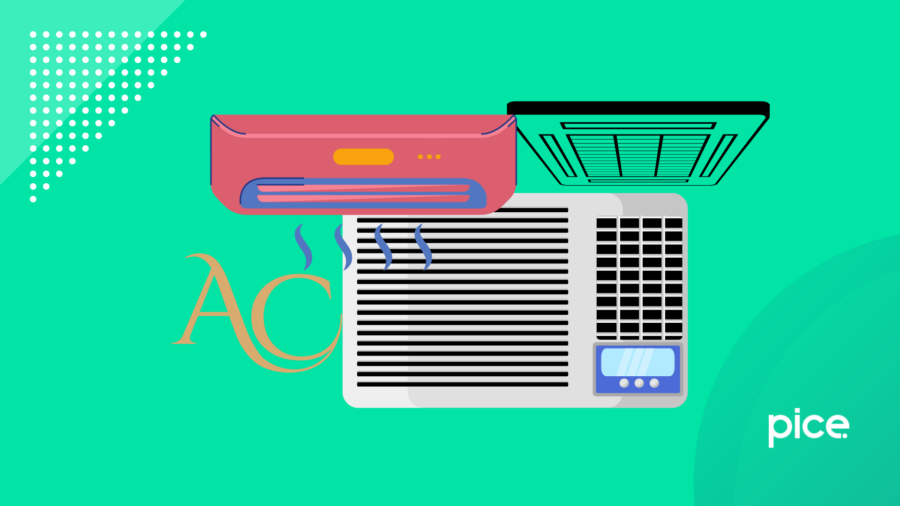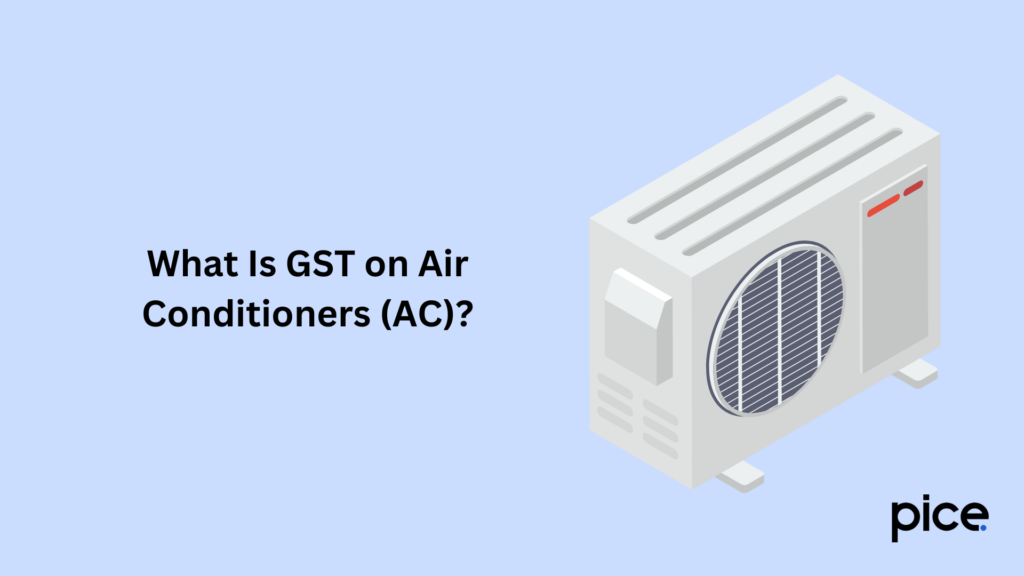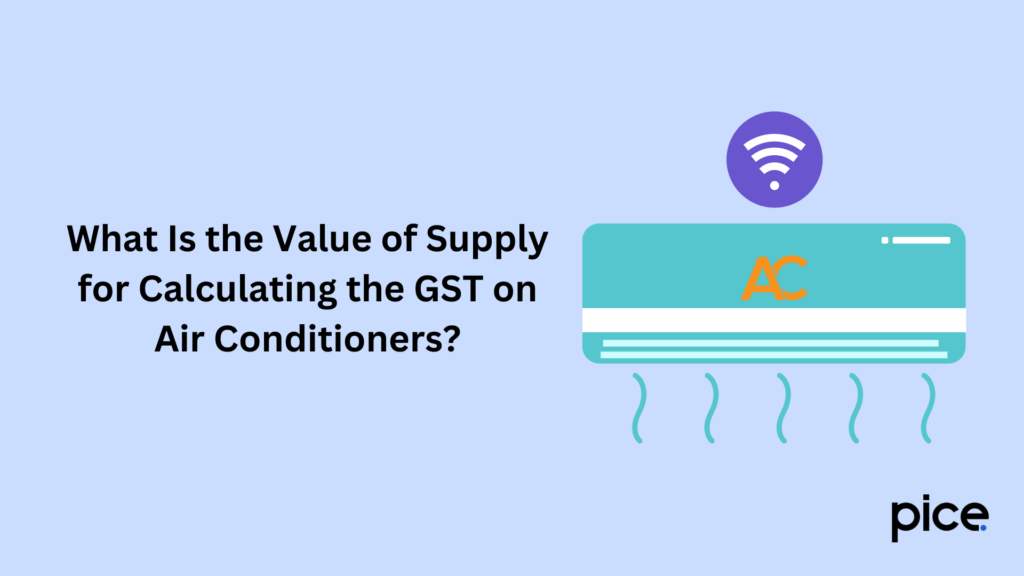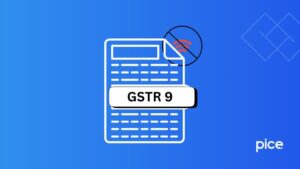GST on Air Conditioners: AC HSN Code and GST Rate
- 4 Sep 24
- 7 mins

GST on Air Conditioners: AC HSN Code and GST Rate
- What Is GST on Air Conditioners (AC)?
- HSN Code for Air Conditioners
- Applicability of GST on Air Conditioners
- GST on Air Conditioners (AC): Pre-GST vs Post-GST
- Why Is the GST Rate on Air Conditioners Expensive?
- What Is the Value of Supply for Calculating the GST on Air Conditioners?
- Input Tax Credit (ITC) Availability and Reversal for Air Conditioners
- Conclusion
Key Takeaways
- ACs Taxed at 28% GST: Air conditioners are classified as luxury goods, taxed at the highest GST rate of 28%, covering both supply and installation.
- HSN Code is Essential: Accurate HSN code (e.g., 8415) is crucial for proper GST compliance on air conditioners.
- GST Slightly Raised AC Prices: The 28% GST rate has resulted in a small increase in air conditioner prices compared to the pre-GST era.
- Businesses Can Claim ITC: Businesses can claim Input Tax Credit (ITC) on air conditioners used for business, if categorized as plant and machinery.
- Simplified Tax System: GST has replaced multiple indirect taxes, simplifying the tax process and compliance for air conditioner purchases.
With the rising temperature in India, air conditioners, although considered to be a luxury good, have become a necessity now and are widely purchased. Hence, being aware of the Goods and Services Tax (GST) implications is important for both businesses and consumers.
Under the GST regime, tax rates are standardised across the country, impacting the prices of everyday appliances, including air conditioners. In this blog, we will discuss the details of the AC GST rate, emphasising on Harmonised System of Nomenclature (HSN) Code, its impact on business operations and more.
What Is GST on Air Conditioners (AC)?

ACs fall under the category of luxury items, which is taxed at 28% under the Goods and Services Tax regime. This tax rate applies not only to the supply of air conditioners but also to their installation services.
Air conditioners are often regarded as composite supplies as some suppliers of air conditioners include installation charges in the final cost. The 28% tax rate applies to all ACs, irrespective of their type– window or split.
HSN Code for Air Conditioners
The HSN Code applicable to AC is as follows:
| HSN code | Description |
| 8415 | Air conditioner including a motor fan for altering temperature and humidity |
| 841583 | Not incorporating a refrigerating unit |
| 84158310 | Split air conditioner with a capacity of 2 tonnes and more–not incorporating a refrigerating unit. |
| 84158390 | Not incorporating a refrigerating unit: Other |
Applicability of GST on Air Conditioners
The Goods and Services Tax comprises four slabs: 5%, 12%, 18%, and 28%. 5% is applicable for essential goods, standard rates are between 12% and 18%, and 28% is applicable for luxury goods. GST applies to nearly all electronic items, including air conditioners. As ACs are considered luxury goods, they fall under the highest GST slab of 28%
However, with the increasing temperature in India, ACs, which fall under the luxury category, have become an essential commodity in many Indian cities.
GST on Air Conditioners (AC): Pre-GST vs Post-GST
Before the implementation of GST, the various components of AC were subject to 2 taxes– Value-added Tax (VAT) and excise duty. The combined tax on air conditioners was 27% to 28%. Since GST, a total of 28% was applicable for air conditioners. There has been an increase of 1% to 5% in prices and this additional tax burden is borne by the consumers.
This table draws a comparison between the rate of air conditioners pre-GST era and post-GST era:
| Particulars | Pre-GST Rate | Post-GST Rate |
| Cost of Manufacturing | ₹60,000 | ₹60,000 |
| Excise Duty (12.5%) | ₹7,500 | NA |
| Cost of Production | ₹67,500 | ₹60,000 |
| Cost of Transportation | ₹5,000 | ₹5,000 |
| Value Addition Costs | ₹5,000 | ₹5,000 |
| Product Cost | ₹88,350 | ₹89,600 |
| Value Added Tax (14%)/GST (28%) | ₹10,850 | ₹19,600 |
As we can observe, the Goods and Services Tax has led to a price hike for ACs.
Why Is the GST Rate on Air Conditioners Expensive?
Since air conditioners are under the classification of luxury goods, the applicable GST rate is 28%. With high import duty on air conditioners, the government not only aims to increase the usage of essential and local commodities among citizens but also earn high revenue through it.
What Is the Value of Supply for Calculating the GST on Air Conditioners?

Under GST, supply is considered as a taxable event. The value of supply is equal to the transactional value.
Transactional value is the amount that is either payable or is already paid for the supply of goods and services. When it comes to air conditioners, the installation charges are combined with the supply of air conditioners, making it a composite supply.
Therefore, the Value of Supply = Sale Value + Installation Charges.
Input Tax Credit (ITC) Availability and Reversal for Air Conditioners
Under GST regulations, registered individuals can claim Input Tax Credit (ITC) on goods or services purchased for business use. However, Section 17(5) puts a restriction on claiming ITC on goods or services that a person receives for immovable property construction, except for plant and machinery.
Air conditioners (split or windows) do not fall under the definition of ‘immovable property’ as their location can be changed. Immovable property refers to goods that are permanently attached to the earth, walls or building and cannot be located elsewhere. When it comes to a centralised air conditioning system, it can be defined as ‘plant and machinery.’
Additionally, if the air conditioner is used for business purposes and installed in an office or factory, you are eligible to claim ITC. To claim ITC, book the AC as plant and machinery, not as part of building costs.
Impact of GST on Air Conditioners' Prices
GST has several impacts on air conditioner’s prices:
- By claiming ITC, AC companies are eligible to recover the GST they had to pay on goods and services. This, in turn, has played a role in lowering the prices of air conditioners.
- The single taxation system of GST is simpler and easier for compliance. Before its implementation, multiple indirect taxes like excise duty, VAT and service tax were applicable, which made the process complicated.
Conclusion
Whether you’re a business owner or a consumer, knowing the AC GST rate helps you manage your finances and possibly save money. By understanding the right HSN code and taxes, you can stay compliant with tax rules. As tax systems change, being informed about these details will help you make smarter investment decisions and manage your business better.
💡If you want to pay your GST with Credit Card, then download Pice Business Payment App. Pice is the one stop app for paying all your business expenses.
 By
By 

















